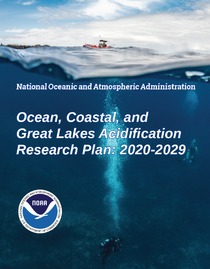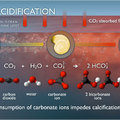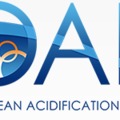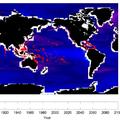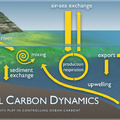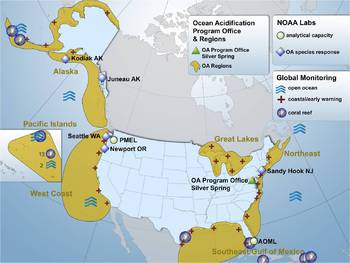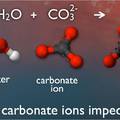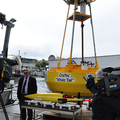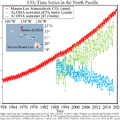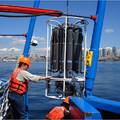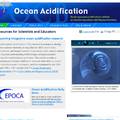NOAA OA Plan
NOAA researchers and managers are working to coordinate ocean acidification research efforts
Ocean acidification has the potential to seriously threaten the future health of the world’s oceans and the significant economic benefits they provide to humankind. This rapidly emerging scientific issue has raised serious concerns across the scientific and resource management communities as to possible ecological and economic impacts. In response to these concerns, 70 scientists throughout NOAA developed the NOAA Ocean and Great Lakes Acidification Research Plan to present a consensus research strategy for NOAA to advance the understanding of the impacts of ocean acidification and to address related challenges to local and national ecosystems and communities.
As a part of NOAA’s mission and numerous legislative mandates, we are required to understand and predict changes in Earth’s environment as a consequence of continued acidification of the oceans and Great Lakes and conserve and manage marine organisms and ecosystems in response to such changes. The Federal Ocean Acidification Research and Monitoring (FOARAM) Act of 2009 mandates that NOAA has an active monitoring and research program to determine potential impacts of decreased ocean pH and carbonate saturation states, which are happening in direct response to rising atmospheric CO2. Other mandates (e.g., Magnuson-Stevens Fishery Conservation and Management Act, Marine Mammal Protection Act, National Marine Sanctuaries Act, Endangered Species Act, Coral Reef Conservation Act, and Clean Water Act) also require that NOAA work to fully understand the consequences of a changing environment to marine and Great Lakes resources. In addition, NOAA must respond to various interagency ocean research and policy implementation efforts, such as The Interagency Ocean Policy Task Force and Charting the Course for Ocean Science in the United States for the Next Decade: An Ocean Research Priorities Plan and Implementation Strategy.
Characterizing the extent of acidification in our oceans and Great Lakes and predicting the ramifications for marine and freshwater resources and ecosystem services is critical to national and international climate mitigation discussions and to local communities that rely on these resources to prepare and adapt to ocean acidification. NOAA's research plan addresses a set of core fundamental hypotheses. These hypotheses are intended to provide strategic science-based guidance to the NOAA research community and to help integrate the broad range of proposed activities toward a common purpose. These hypotheses address the characterization of the biogeochemical changes across a range of environments, evaluating the response of key aquatic organisms and ecosystems, and illuminating the range of vulnerabilities in order to inform adaptive management strategies.
Hypothesis 1. Rates and magnitude of acidification vary across time, space, and depth as a consequence of local and regional geochemical, hydrological, and biological mechanisms.
Hypothesis 2. Ocean acidification will change ecosystem structure, function, and biodiversity via both direct impacts (e.g., altered growth or survival rates) and indirect effects (e.g., food web and/or habitat changes).
Hypothesis 3. Heterogeneity in species-specific responses, local environmental and regional considerations will confer a broad range of vulnerabilities that differ both locally and regionally.
For additional information, please refer to NOAA's Ocean and Great Lakes Acidification Research Plan (Full Plan or Highlights) and to the website of the Interagency Working Group on Ocean Acidification.

